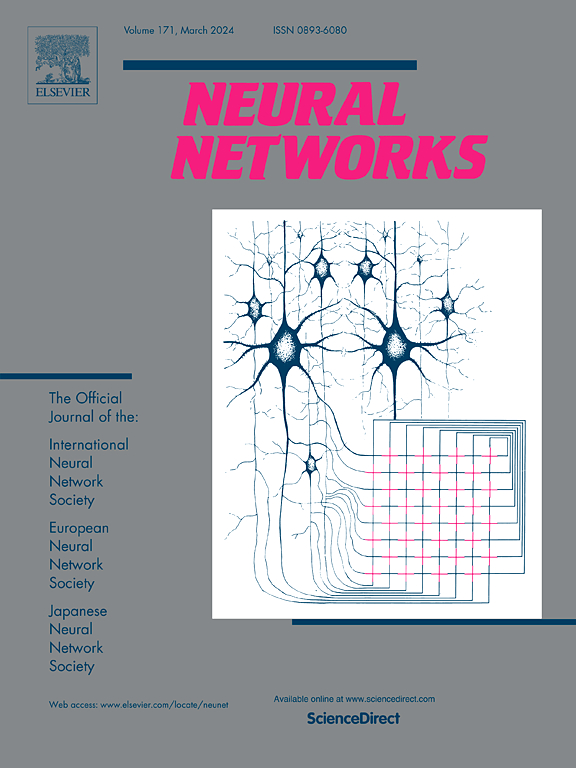异构信息网络中高阶关系预测的反事实学习。
IF 6
1区 计算机科学
Q1 COMPUTER SCIENCE, ARTIFICIAL INTELLIGENCE
引用次数: 0
摘要
异构信息网络(HINs)在复杂社会系统建模中起着至关重要的作用,其中预测缺失的链接/关系是一项重要任务。现有的方法主要关注成对关系,但现实世界的场景通常涉及多实体交互。例如,在学术协作网络中,一篇论文、一个会议和多个作者之间发生交互。这些高阶关系普遍存在,但尚未得到充分探索。此外,现有的方法往往忽略了全局图结构与关系状态之间的因果关系,限制了它们捕捉驱动关系预测的基本因素的能力。在本文中,我们提出了HINCHOR,一个用于HINs中高阶关系预测的端到端模型。HINCHOR引入了一个高阶结构编码器来捕获多实体接近信息。然后,它关注一个反事实问题:“如果全局图结构不同,高阶关系会改变吗?”通过提供反事实数据增强模块,HINCHOR利用全局结构信息生成反事实关系。通过反事实学习,HINCHOR在预测高阶关系的同时估计因果关系。在四个构建的基准数据集上的实验结果表明,HINCHOR优于现有的最先进的方法。本文章由计算机程序翻译,如有差异,请以英文原文为准。
Counterfactual learning for higher-order relation prediction in heterogeneous information networks
Heterogeneous Information Networks (HINs) play a crucial role in modeling complex social systems, where predicting missing links/relations is a significant task. Existing methods primarily focus on pairwise relations, but real-world scenarios often involve multi-entity interactions. For example, in academic collaboration networks, an interaction occurs between a paper, a conference, and multiple authors. These higher-order relations are prevalent but have been underexplored. Moreover, existing methods often neglect the causal relationship between the global graph structure and the state of relations, limiting their ability to capture the fundamental factors driving relation prediction. In this paper, we propose HINCHOR, an end-to-end model for higher-order relation prediction in HINs. HINCHOR introduces a higher-order structure encoder to capture multi-entity proximity information. Then, it focuses on a counterfactual question: “If the global graph structure were different, would the higher-order relation change?” By presenting a counterfactual data augmentation module, HINCHOR utilizes global structure information to generate counterfactual relations. Through counterfactual learning, HINCHOR estimates causal effects while predicting higher-order relations. The experimental results on four constructed benchmark datasets show that HINCHOR outperforms existing state-of-the-art methods.
求助全文
通过发布文献求助,成功后即可免费获取论文全文。
去求助
来源期刊

Neural Networks
工程技术-计算机:人工智能
CiteScore
13.90
自引率
7.70%
发文量
425
审稿时长
67 days
期刊介绍:
Neural Networks is a platform that aims to foster an international community of scholars and practitioners interested in neural networks, deep learning, and other approaches to artificial intelligence and machine learning. Our journal invites submissions covering various aspects of neural networks research, from computational neuroscience and cognitive modeling to mathematical analyses and engineering applications. By providing a forum for interdisciplinary discussions between biology and technology, we aim to encourage the development of biologically-inspired artificial intelligence.
 求助内容:
求助内容: 应助结果提醒方式:
应助结果提醒方式:


